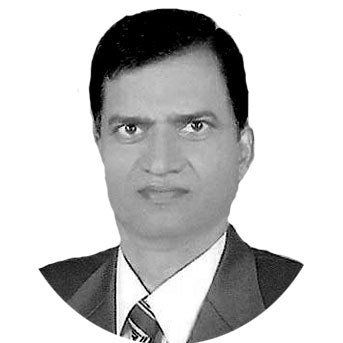Dr Rajkumar Singh
IN the final phase the historic event came when the Heads of State or Government met at the first SAARC Summit in Dhaka in December 1985 and decided to establish the South Asian Association for Regional Cooperation. Further the policy-level meetings, well supported by the reports and recommendations of the technical bodies, have in fact led to a continuous process of expansion, at least in the non-controversial areas of cooperation. The countries of the South Asian Association for Regional Cooperation (SAARC) represents 1.47 billion people, which is around 25 per cent of the world population. The inspiring and unique aspects of SAARC countries are :high intensity of bio-diversity in the region; largest population of youth in the world; combined purchasing power that has the potential to be the highest in the world; a civilisational heritage that goes back thousands of years. The regional organisation SAARC originally comprises Bangladesh, Bhutan, India, Maldives, Nepal, Pakistan and Sri Lanka, it however, has included Afghanistan formally in April 2007 as the eighth member. The initial phase evolution of SAARC involved the Foreign Secretaries and senior officials of region in an effort to agree on a basic framework of regional cooperation.
Organising SAARC meetings: The two-day meeting of first-ever SAARC Information Ministers’ was held in Dkaha and inaugurated by Sheikh Hasina who in her address, stressed continued expansion of close cooperation through unfettered flow of information aiming at overall development of the SAARC region. She said the seven SAARC countries could have their further development through exchanging information on agriculture, health, education, industry, commerce, tourism and culture. Hasina referred to the cardinal principle of SAARC that aimed to promote harmonious relationship and cooperation among the member countries. The region, she said, abounds with enormous resources with which we can overcome our resource constraints if we can make planned utilisation of resources for the welfare of the people on the basis of cooperation. However, Mushahid Hussain, Pakistan’s Information and Media Development Minister, during a closed door session, referred to Kashmir as a flash point in the region because of the unresolved dispute between his country and India. He also called for an early settlement of the dispute to boost regional cooperation. Sushma Swaraj, India’s Minister for Information and Broadcasting, reacted sharply to the remarks made by Pakistani Minister and demanded its deletion. Despite protests from Pakistani delegates, Bangladesh Information Minister Abu Sayeed who was presiding over the session said anything contrary to the regional spirit would be automatically deleted from the meeting proceedings.
Basic themes promoted: The Indian Minister, in her address, stressed the need for creating an information order that can facilitate better understanding and strengthen the bonds of friendship among the member countries of the SAARC. “The better way to achieve this is pooling our resources and acting the concert” she added. She also had an opportunity to speak at the working session of the SAARC Ministers in which special emphasis was given on the need to evolve mechanism for information sharing. At the end of their two-day meeting the SAARC plan of action on media and information with the avowed objective of promoting peace, progress and cooperation in the region was adopted. Known as the Dhaka Communiqué, the plan of action outlined the goals and objectives under a comprehensive strategy for cooperation stressed greater flow of information in SAARC region on all issues of common concern. Apart from objectives, the communiqué further said that member countries will work to generate, disseminate and exchange information material on all SAARC initiatives in important areas with development, functional cooperation, environmental protection and human resource development. Promotion of economy and trade: Further two-day SAARC Commerce Ministers’ meeting was preceded by the 10th meeting of the Commerce Secretary-level Committee on economic cooperation under SAARC and was organised by Bangladesh. The meeting was inaugurated by Tofail Ahmed, Industry and Commerce Minister of the country, who, in his address, said that the South Asian regional economic integration should be faster for creating new opportunities for regional development. The Commerce Secretaries in their deliberations, would review the progress of the implementation of the decisions taken at the previous meeting and the decision of the second SAARC Commerce Ministers’ meeting held in Islamabad last year. They also reviewed the progress of the implementation of the SAARC Preferential Trading Arrangement (SAPTA). P P Prabhu, India’s Commerce Secretary attended the meeting and said in his address that greater economic cooperation in the region would help bring about a success of the SAPTA since all the countries of South Asia were in favour of a close economic integration among themselves.
Commerce Secretary level Committee’s meeting was followed by the two-day SAARC Commerce Minister’s meeting aimed at augmenting intra-regional trade and investment through exploration of new areas of cooperation. Inaugurating the meeting Sheikh Hasina, the Prime Minister of Bangladesh emphasised harmonious and coordinated approach to develop economies of SAARC countries in a spirit of cooperation. She referred to the immense possibilities of investment covering the fields of hydro-power, communication, infrastructure, sea port gas and energy. On the issue of trade and investment, Hasina stressed the need for intra-SAARC investment flow to the benefit of the countries of the region. She laid emphasis on the South Asia Quadrangle created within the SAARC framework to harness the untapped resources of Bangladesh, Nepal, Bhutan and the North-Eastern part of India for mutually beneficial purposes.
— The writer is Professor and Head, P G Department of Political Science, Bihar, India.










